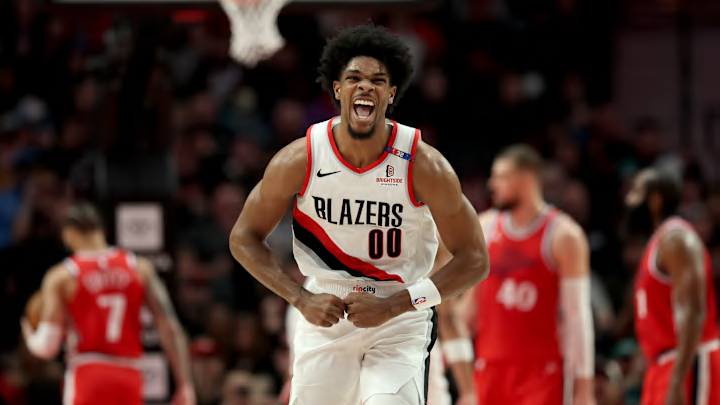Scoot Henderson's career path could resemble that of one-time All-Star and NBA champion Jeff Teague. There are several similarities between the athletic 6-foot-3 guards with Georgia roots.
Henderson's development and transition to the NBA, which some viewed as underwhelming, is already ahead of schedule compared to Teague (and several other guards who went on to have successful NBA careers).
Scoot Henderson becoming Jeff Teague wouldn't be a bad thing
Coming out of Wake Forest, Teague was the No. 19 overall pick in the 2009 NBA Draft and wasn't as coveted of a prospect as Henderson. As a result, Teague had a diminished role in his first two seasons in Atlanta. His breakout came in his third season when he took over the starting role, and his minutes significantly increased from 13.8 to 33.1 per game.
To a lesser extent, Henderson could be on the verge of his own third-year breakout campaign, especially if the Portland Trail Blazers decide to trade away Anfernee Simons and officially give Scoot the keys to the backcourt.
Given the draft capital invested and Henderson's quicker start, some might see a Teague comparison as a disappointing outcome. His career averages are somewhat deflated by lackluster seasons at the beginning and end of his career, so his 12.2 points, 5.6 assists, 2.4 rebounds, and 1.1 steals don't jump off the page.
Admittedly, even his All-Star appearance in 2015 is questionable. Teague averaged 15.9 points and 7.0 assists while shooting 46 percent from the field and 34.3 percent from deep. But the Hawks finished first in the Eastern Conference that season with a 60-22 record, a testament to how good Teague was as a floor general.
Scoot does have a higher ceiling than that if everything goes right, but in terms of realistic outcomes, Teague may be the best comparison.
Despite his self-deprecating humor as a podcaster, Teague had a better career than many, including himself, tend to acknowledge. And if Henderson does become an All-Star, it seems likely that it will be a once or twice appearance like Teague rather than consistently, especially in the Western Conference, which somehow only gets stronger.
To reach that level, Henderson needs to improve his efficiency and turnovers. In his prime, Teague hovered around 45 percent from the field with seven assists and less than three turnovers a game. Henderson finished his second season shooting 41.9 percent from the field with similar turnovers despite a lessened playmaking role.
The good news, however, is that Scoot is trending in the right direction, showing significant improvements from his rookie season. And although both guards are at their best when utilizing their athleticism to attack the paint, Henderson may have Teague beat in the three-point department.
He shot 35.4 percent from beyond the arc, including an impressive 39-point performance against Brooklyn, where he connected on 8-of-10. If Henderson can become an above-average three-point shooter, that will go a long way in the modern NBA and could potentially separate himself from being in the same realm as Teague.
It's still too early to tell, and there are many directions Henderson's career could take. But right now, this feels like the most realistic outcome for Portland's rising star.
